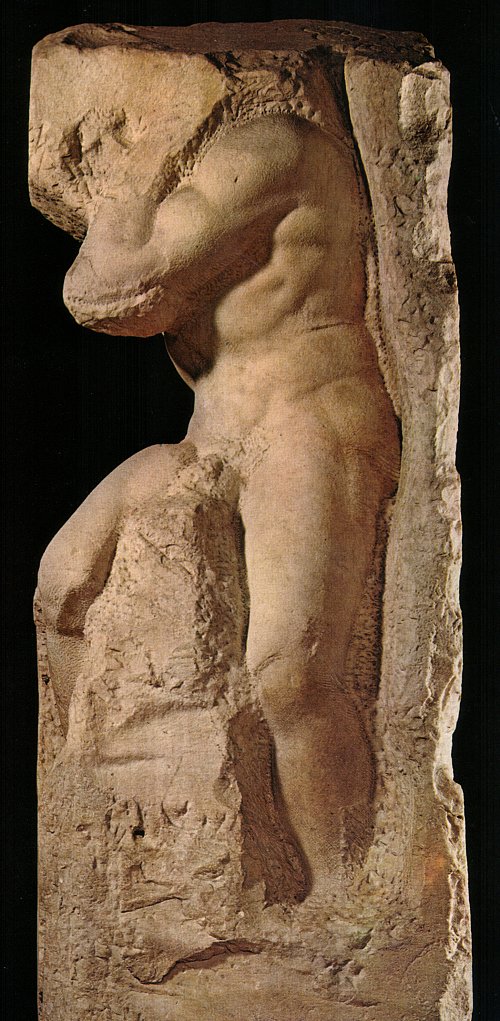Atlas Prisoner
To the left down the corridor stands the "Atlas Slave." A male nude that looks like he is carrying an enormous weight on top of him for a reason, being named after Atlas, the ancient Titan who bore the heavens. His trap at the head with stone forces this slave to carry and push against forces with such immense amount of material that it appears about top him off with pressure lunging forward and given we are into dynamic action tension: here there is no sense of equilibrium but rather never-ending battle between opposing forces about spilling balance; rather, it's an unending struggle of odds about spilling eruption and both directions. This pressure produces a power that maybe more than towards others Slaves conveys energy figure trying to break free from marble.
The four sculptures of Prisoners, commonly referred to as "Slaves" in English, were produced between 1519 and 1534 and were specifically intended for the splendid tomb of Pope Julius II of the Della Rovere family. When the great design was left incomplete, these statues remained in the workshop of Michelangelo; at his death, they were given to Duke Cosimo I de' Medici.
The grand duke installed them in the Grotta del Buontalenti at the Boboli Gardens, where they remained until 1909; later they were shifted to the Galleria dell’Accademia to be put on view in the main corridor toward the Tribune. The figure that was called Atlas takes its name from its pose, which is similar to those of ancient depictions of the Titan Atlas, who, too a captive, had been sentenced by Zeus to carry on his shoulder the vaults.
The incomplete pieces show evidence of Michelangelo's tools, including several types of chisels, the rasp, and most notably the bow drill, prominently along the upper edge of the back in this piece. The full-bodied muscular figure is roughly worked; it looks like it is still imprisoned within its block of marble, with squared edges still showing distinctly. Only at the upper corner is a minimally worked face visible, standing for what little there is in view with regard to the head.
Displayed at the Louvre in Paris are two stupendous sculptures, the Rebellious Slave and the Dying Slave (ent. 1510-13). Vasari relates in his Lives of the Artists about when these works were sent to France: "He made in Rome two of the captives with his own hand altogether perfect and ineffably beautiful, together with many other statues whereof he never made others equal unto them; but it came to pass they were never set up, and these captives he presented to Ruberto Strozzi while Buonaroto was ailing at his house: afterwards they were sent as a present unto King Francis, and now do they rest in Ecouen, France."

